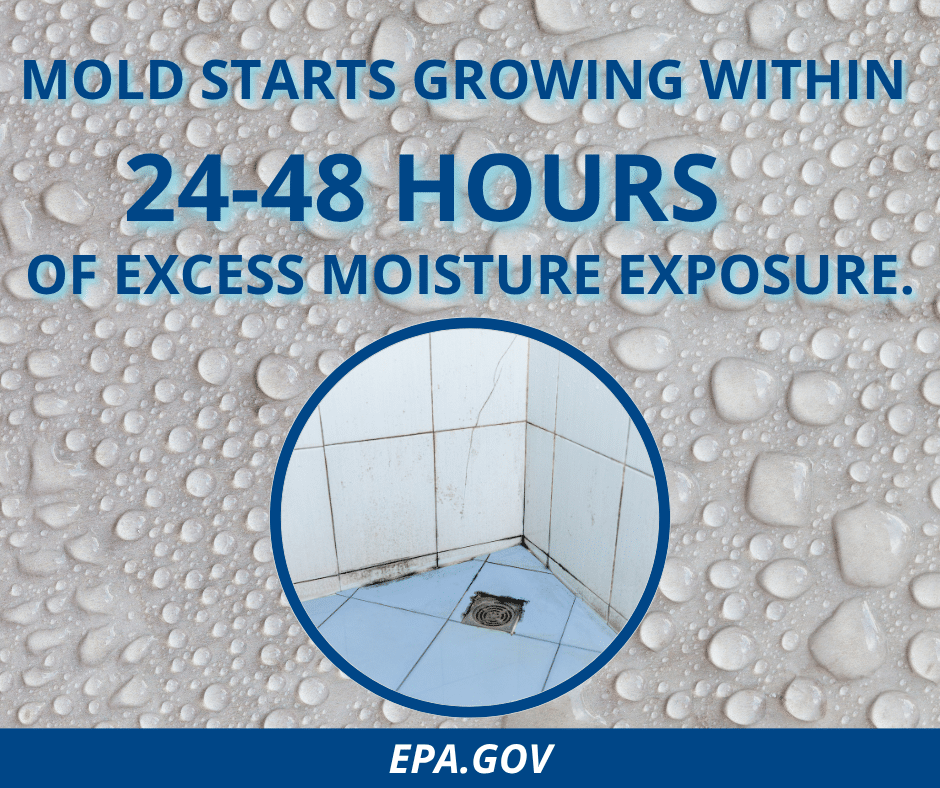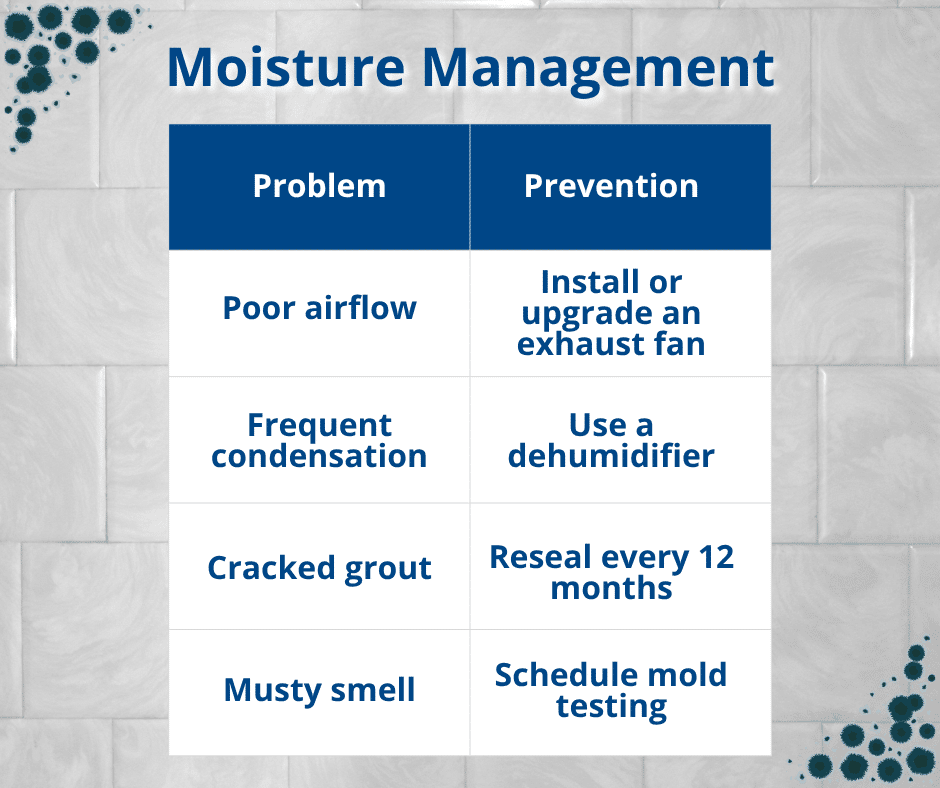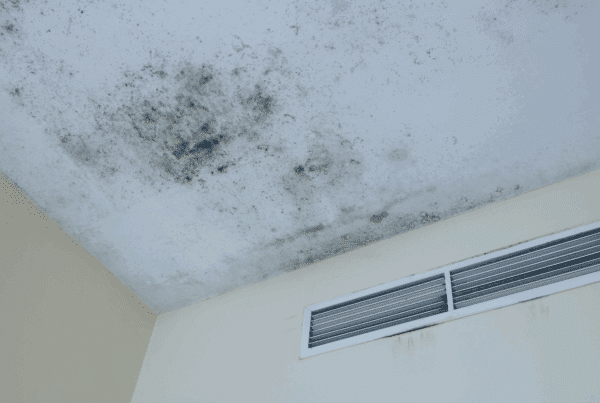
Finding mold in your shower can be frustrating, and even a little alarming. That dark buildup in your grout or the musty smell after a hot shower isn’t just unpleasant; it could be a sign that moisture is lingering longer than it should. Knowing how to remove mold from a shower before it spreads starts with understanding the real cause, not just wiping away the symptoms.
Many homeowners try to scrub mold away, only to have it return a few weeks later. The truth is, mold problems start small and spread fast when underlying moisture or ventilation issues aren’t addressed.
At Boggs Inspection Services, we specialize in mold testing, air quality testing, and prevention, not cleanup or remediation. Our goal is to help homeowners identify problems early, understand what’s happening inside their home, and prevent future growth before it becomes a serious health or property concern.
What Causes Mold to Grow in Showers
Mold thrives anywhere moisture, warmth, and organic matter combine, and your bathroom provides all three. After every shower, steam lingers in the air, condensation forms on surfaces, and water collects in grout lines or corners. If that moisture isn’t quickly dried or ventilated, mold spores in the air settle and grow.

Top causes of mold growth in showers include:
- Poor ventilation: Bathrooms without proper exhaust fans or open windows trap humidity.
- Leaky fixtures or pipes: Even minor leaks behind walls or under tiles can create hidden moisture pockets.
- Porous materials: Grout, caulking, and even drywall can hold moisture, giving mold a perfect breeding ground.
- Standing water: Puddles near drains or on flat shower surfaces allow mold spores to multiply.
Mold isn’t just about aesthetics, it’s a sign your bathroom’s airflow and humidity control need attention. Over time, unchecked moisture can lead to damage beneath tiles, unpleasant odors, and even potential health symptoms like nasal irritation or coughing.
Pro tip: After showering, leave the door or curtain open and run your exhaust fan for at least 20 minutes. This simple step reduces humidity levels dramatically.
How to Tell if Mold Is Starting to Spread
It’s difficult to know how to remove mold from a shower. Mold doesn’t appear overnight. The sooner you recognize early warning signs, the easier it is to prevent widespread growth.
Common early signs of mold in your shower include:
- Discoloration: Black, green, or brown patches appearing along grout lines, caulk edges, or corners.
- Persistent musty odor: A damp, earthy smell that lingers even after cleaning.
- Condensation or fog: Mirrors or tiles that stay wet long after the water stops running.
- Peeling paint or bubbling surfaces: Signs that moisture is trapped behind walls or ceilings.
- Recurring spots: Mold that comes back after cleaning often indicates hidden moisture or ventilation issues.
At this stage, surface cleaning might make things look better temporarily, but it doesn’t address the root cause. If you notice these symptoms, or if mold seems to keep returning, it’s a good time to schedule a professional mold test and learn how to remove mold from shower.
Testing helps confirm:
- Whether the growth is surface-level or deeper in your structure.
- If your indoor air quality is being affected by mold spores.
- The source of moisture fueling the problem.
According to the Environment Protection Agency, mold can begin growing within 24 to 48 hours of excess moisture exposure. That means early detection and quick action can prevent a small issue from becoming a costly cleanup later.
Why Mold Testing Is the First Step Before Any Cleanup
Before reaching for cleaning products, it’s important to understand what you’re dealing with. Not all mold is the same, and not all of it can be seen. Mold testing gives homeowners the clarity needed to make informed choices and understand how to remove mold from a shower.
Here’s what professional mold testing can reveal:
- The type of mold present. Some molds are allergenic, while others can indicate serious moisture intrusion.
- The extent of contamination. Testing can show whether spores are contained to one area or have spread through your home’s air.
- Hidden mold detection. A surface may look clean, but spores can thrive behind tiles, walls, or under flooring.
- Air quality levels. Air sampling measures the number of spores in your home’s air and compares it to outdoor levels.
At Boggs Inspection Services, our certified inspectors use precise tools and laboratory testing to identify mold types and concentrations. Because we don’t provide remediation, our results are 100% objective. You’ll receive a detailed report that explains what’s happening and what steps to take next.
This testing-first approach ensures you’re not paying for unnecessary cleaning or repairs. It’s about understanding before acting, which saves time, money, and stress.
Removing Mold from Shower Before It Spreads
When homeowners hear “remove mold,” they often think of bleach or strong cleaners. While those products can remove visible mold, they rarely prevent it from coming back. Real prevention means addressing the moisture source, not just the stain.
Here’s how to approach mold removal and prevention the smart way:
Step 1: Inspect and Test
If mold keeps coming back, professional testing is the first step. Testing identifies whether mold spores are spreading into other areas of your home and reveals the cause, often hidden leaks, high humidity, or inadequate airflow.
Step 2: Improve Ventilation
Your exhaust fan should run for at least 20 minutes after every shower. If it doesn’t seem to keep the bathroom dry, it may be undersized or not vented properly. Upgrading to a humidity-sensing fan can automatically turn on when moisture rises.
Step 3: Control Humidity Levels
High indoor humidity is one of the biggest reasons mold spreads. Keep humidity under 50% using a dehumidifier or by opening windows during drier weather. Hygrometers are inexpensive and can help you track levels.
Step 4: Reseal and Repair
Check your grout and caulking every few months. Cracks or peeling can trap water and allow mold to take hold underneath. Resealing once a year with mold-resistant products helps prevent hidden moisture.
Step 5: Keep Surfaces Dry
After showering, use a squeegee or towel to wipe down walls, doors, and floors. This small habit significantly reduces standing water, the primary source of bathroom mold.
You can’t completely remove mold from your home forever, but you can stop it from spreading and returning by controlling moisture and testing early.
Long-Term Prevention Tips to Keep Showers Mold-Free
Long-term prevention is about consistency. Mold spores are always in the air, but they only grow when moisture sticks around. Keeping your shower dry and well-ventilated makes a huge difference.
Daily Prevention Habits:
- Dry after use: Wipe walls, doors, and floors after each shower.
- Leave the door open: Let air circulate for faster drying.
- Run the fan longer: Keep it running 20–30 minutes after showering.
- Avoid clutter: Loofahs, bottles, and toys trap water and block airflow.
Maintenance & Upgrades:
- Repaint with mold-resistant paint for better protection.
- Install vent fans rated for your bathroom size.
- Replace grout and caulk annually to seal out moisture.
- Use bathroom-safe dehumidifiers in naturally humid climates.

Following these small steps creates a cleaner, healthier environment while protecting your home’s structure from long-term damage.
When to Call a Professional for Mold Testing
Not every case of bathroom mold requires a professional inspection, but if mold returns after cleaning or if you suspect hidden growth, it’s time to call in an expert.
You should schedule professional mold testing if:
- The mold keeps coming back even after deep cleaning.
- You notice a musty smell but can’t find the source.
- There’s been a leak, overflow, or previous water damage.
- Someone in your home is experiencing allergy-like symptoms.
- You’re preparing to sell or purchase a home and want assurance of air quality.
A professional inspection from Boggs Inspection Services involves detailed testing of both surfaces and indoor air. You’ll receive lab-verified results that identify mold type and concentration, along with practical prevention recommendations.
Because Boggs doesn’t perform remediation, our reports are independent and unbiased. You can use your test results to choose a reputable remediation company if needed, knowing you’re basing decisions on accurate data.
Related Questions
How accurate is mold testing?
Professional mold testing provides lab-analyzed results that can detect even hidden mold spores. It’s far more accurate than store-bought test kits, which often produce false positives due to environmental contamination.
How often should I test for mold in my bathroom?
If you live in a humid region or have had previous mold issues, annual testing or testing after any water leak is a good idea. It’s also recommended when buying or selling a home.
Can a home inspection detect mold before it spreads?
Yes. During a general home inspection, professionals often look for signs of moisture intrusion, water damage, or poor ventilation, all of which can lead to mold. If they spot concerns, they’ll recommend dedicated mold testing.
What’s the difference between mold testing and air quality testing?
Mold testing looks for spores on surfaces and in specific air samples. Air quality testing, on the other hand, measures a range of indoor pollutants, including allergens, and dust, giving a fuller picture of your home’s environment.
These insights can help you stay proactive and keep your home safer, cleaner, and healthier year-round.
Conclusion
Mold in your shower is a sign of excess moisture, and a reminder that prevention matters more than reaction. By focusing on testing, airflow, and regular maintenance, you can learn how to remove mold from the shower and stop it before it spreads.
If you’ve noticed mold growth, unusual odors, or repeated moisture problems, it’s time to take action. A professional inspection can pinpoint the issue and help you fix the root cause, not just the symptom.
Schedule your mold testing and air quality testing with Boggs Inspection Services today to get clear answers and peace of mind. Together, we’ll make sure your home stays safe, dry, and healthy for years to come.



